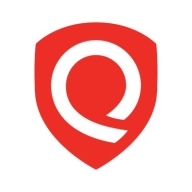

Azure Kubernetes Service AKS and Qualys TotalCloud are popular platforms in cloud-native and security management, respectively. Users are generally happier with the features offered by Qualys TotalCloud, although AKS shows strong performance in other areas.
Features: AKS is noted for its seamless integration with other Azure services, robust orchestration capabilities, and scalability. Qualys TotalCloud is valued for its comprehensive security features, real-time monitoring, and vulnerability management.
Room for Improvement: AKS users seek better documentation, enhanced support for multi-cluster management, and more intuitive user interfaces. Qualys TotalCloud users desire improvements in the speed of scans, more intuitive reporting tools, and optimized performance for large-scale environments.
Ease of Deployment and Customer Service: AKS users report a smoother deployment process and efficient integration with existing infrastructure, paired with responsive customer service. Qualys TotalCloud users find the initial setup straightforward but note a steeper learning curve for some advanced features. Customer service for Qualys, while helpful, is less responsive compared to AKS.
Pricing and ROI: AKS users find the pricing competitive, especially given the seamless integration with other Azure products, resulting in a high ROI. Qualys TotalCloud's pricing is higher, but users feel it is justified by its comprehensive security features and the value it provides in risk management.
It has saved about 90% of our time.
TotalCloud has generated overall savings of 30 to 40 percent across various departments.
CallStream helps us integrate and automate tasks.
They are very fast to respond and begin analysis to resolve problems.
They are helpful, respond to my queries, and can answer any question.
Qualys's tech support is highly responsive, providing multiple ways to interact with them.
Qualys' customer service provides quality answers, but the response time is long, even though it is within the SLA.
AKS offers excellent scalability due to its adaptation from Kubernetes.
We started our organization about nine months back. We started with about 30 users, and we now have more than 100 users.
Our organization currently uses it to manage over 1200 web applications.
It is absolutely scalable, and I would rate its scalability as nine out of ten.
From my usage, I would rate its stability as eight to nine out of ten.
It's very stable, and the support is satisfactory.
Overall, the support provided has been excellent.
It is a stable solution, which is why we chose it.
Continuous monitoring is crucial to ensure system stability and avoid vulnerabilities or threats.
The costs are rising rapidly, and we have not seen any cost reductions by moving to Azure.
It is costly compared to other solutions such as Canonical.
Ideally, the scanner should automatically detect and scan all subdomains, even if not explicitly defined, ensuring comprehensive vulnerability assessment.
Ideally, updates should be more immediate, enabling quicker implementation of solutions.
Our goal is to integrate all these functions into Qualys, creating a single dashboard for comprehensive security monitoring and management.
Transitioning to Azure did not bring cost reductions; in fact, costs are rising rapidly.
The solution is very expensive in my opinion.
The pricing for Azure Kubernetes Service seems to be around the average, which I would rate as a five out of ten.
Qualys TotalCloud's pricing is currently acceptable, it is becoming increasingly expensive.
Pricing is managed by our finance team; however, Qualys TotalCloud offers cost-effective licensing flexibility.
Qualys TotalCloud is expensive, but it offers a premier solution with no headaches.
The most valuable features of Azure Kubernetes Service are its integration with Kubernetes, offering similar features for a seamless experience.
Since pricing is not a major concern, we chose the best fit for our application, which was specifically designed for this particular platform.
The integration with Azure Active Directory helped with the security of our applications.
This view of risk helps reduce the work we would have to do to combine multiple sources to prioritize risk.
It will help cybersecurity professionals monitor the cloud and find vulnerabilities.
We are enjoying the new feature, FlexScan, which is valuable for Internet-facing VMs.
| Product | Market Share (%) |
|---|---|
| Qualys TotalCloud | 1.1% |
| Azure Kubernetes Service (AKS) | 0.8% |
| Other | 98.1% |


| Company Size | Count |
|---|---|
| Small Business | 15 |
| Midsize Enterprise | 7 |
| Large Enterprise | 22 |
| Company Size | Count |
|---|---|
| Small Business | 7 |
| Midsize Enterprise | 2 |
| Large Enterprise | 22 |
Azure Kubernetes Service (AKS) is a fully managed container orchestration service provided by Microsoft Azure. It simplifies the deployment, management, and scaling of containerized applications using Kubernetes. With AKS, developers can focus on building applications while Azure takes care of the underlying infrastructure. It offers features like automatic scaling, monitoring, and security, ensuring high availability and reliability. AKS integrates seamlessly with other Azure services, enabling easy integration with existing workflows. It also provides a flexible and open-source environment, allowing developers to use their preferred tools and frameworks. With AKS, organizations can accelerate their application development and deployment processes, while reducing operational overheads.
TotalCloud is the Qualys approach to Cloud Native Application Protection Platform (CNAPP) for cloud infrastructure and SaaS environments. With TotalCloud, customers extend TruRisk insights (transparent cyber risk scoring methodology) from the Qualys Enterprise TruRisk Platform to their cloud environments allowing for a seamless unified view of cyber risk across on-prem, hybrid, and multi-cloud environments.
Features and capabilities of Qualys TotalCloud include, but are not limited to:
Discover: Complete visibility and insights into cyber-risk exposure across multi-cloud. Continuously discover and monitor all your workloads across a multi-cloud environment for a 360-degree view of your cloud footprint. Identify known and previously unknown internet-facing assets for 100% visibility and tracking of risks.
Assess: Comprehensive cloud-native assessments with FlexScanTM. Extensive scanning capabilities with Qualys FlexScan, including no-touch, agentless, API- and snapshot-based scanning, along with agent- and network-based scanning for in-depth assessment. Use these multiple scanning methods to scan a workload to get a unified and comprehensive view of vulnerabilities and misconfigurations.
Prioritize: Unified security view to prioritize cloud risk with TruRiskTM. Experience a unified risk-based view of cloud security with insights across workloads, services, and resources. Qualys TruRisk quantifies security risk by workload criticality and vulnerabilities; it correlates with ransomware, malware, and exploitation threat intelligence to prioritize, trace, and reduce risk.
Defend: Real-time protection against evolving and unknown threats with InstaProtectTM. Qualys enables continuous monitoring of all cloud assets to ensure they are protected against threats and attacks at runtime. Qualys keeps your cloud runtime safe by detecting known and unknown threats across the entire kill chain in near real-time across a multi-cloud environment.
Remediate: Fast remediation with QFlow – no code, drag-and-drop workflows. The integration of QFlow technology into Qualys TotalCloud saves security and DevOps teams valuable time and resources. Automation and no-code, drag-and-drop workflows help simplify the time-consuming operational tasks of assessing vulnerabilities on ephemeral cloud assets, alerting on high-priority threats, remediating misconfigurations, and quarantining high-risk assets.
We monitor all Container Security reviews to prevent fraudulent reviews and keep review quality high. We do not post reviews by company employees or direct competitors. We validate each review for authenticity via cross-reference with LinkedIn, and personal follow-up with the reviewer when necessary.